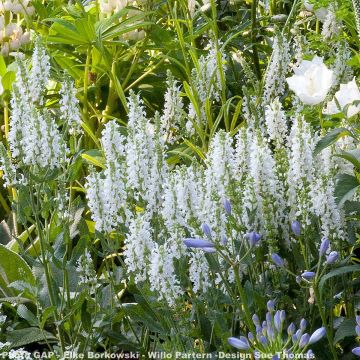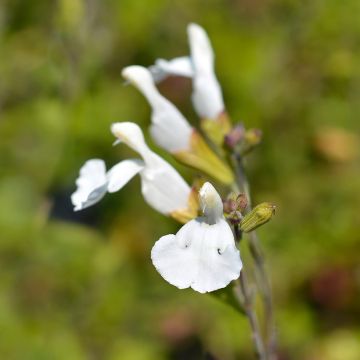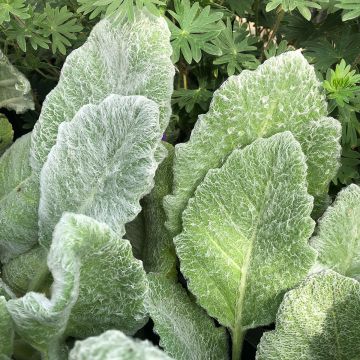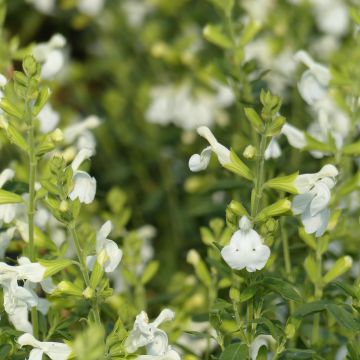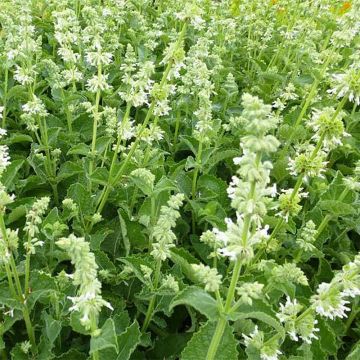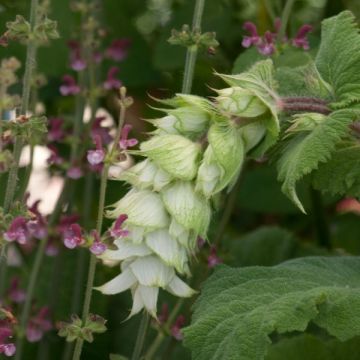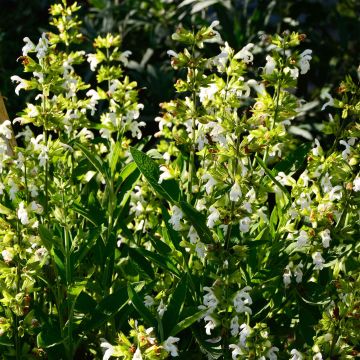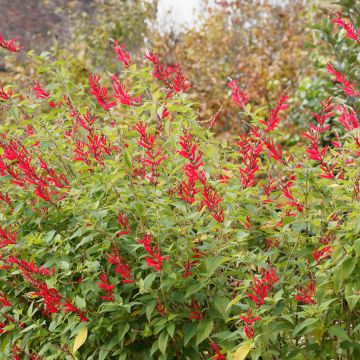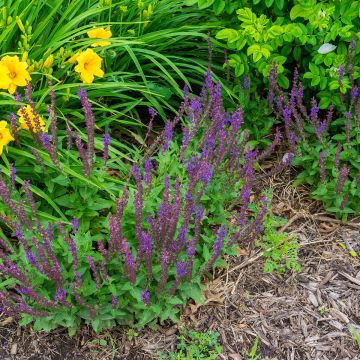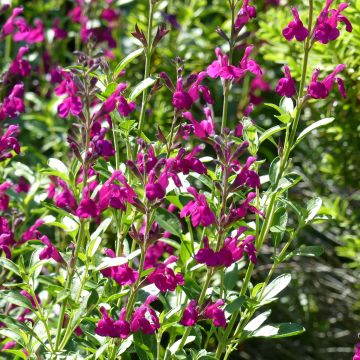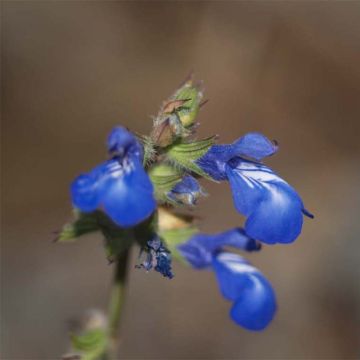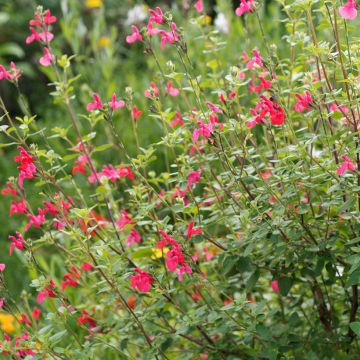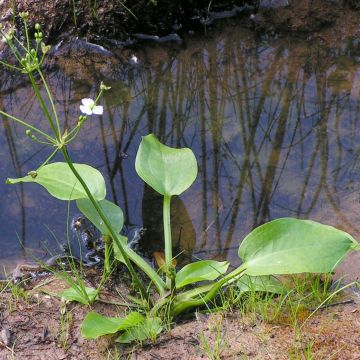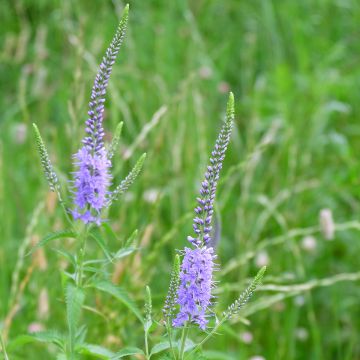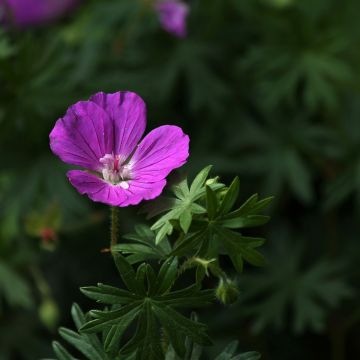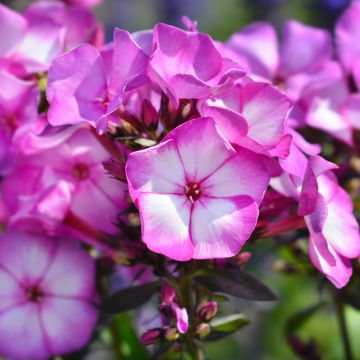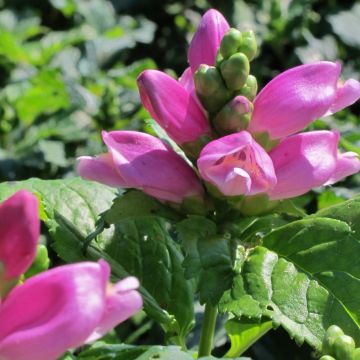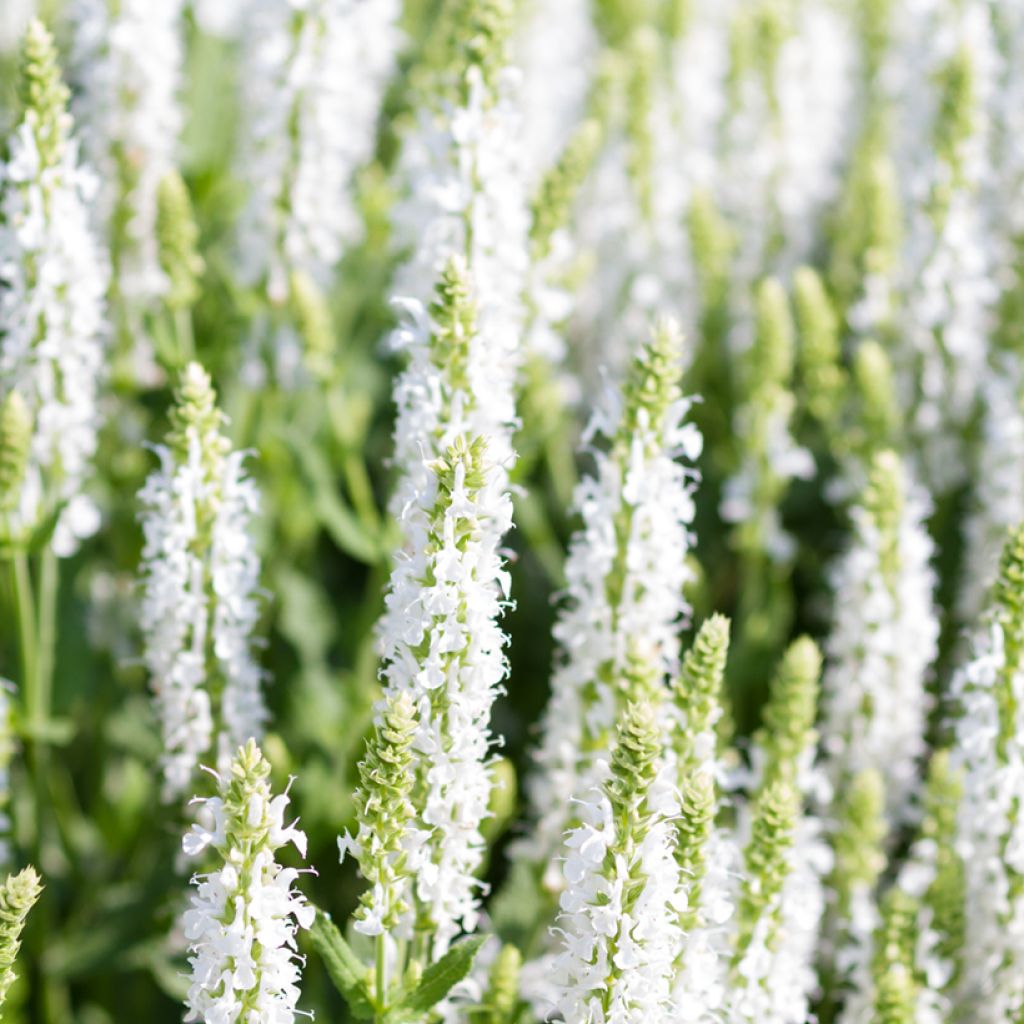

Salvia nemorosa Salute White - Sauge des bois


Salvia nemorosa Salute White - Sauge des bois
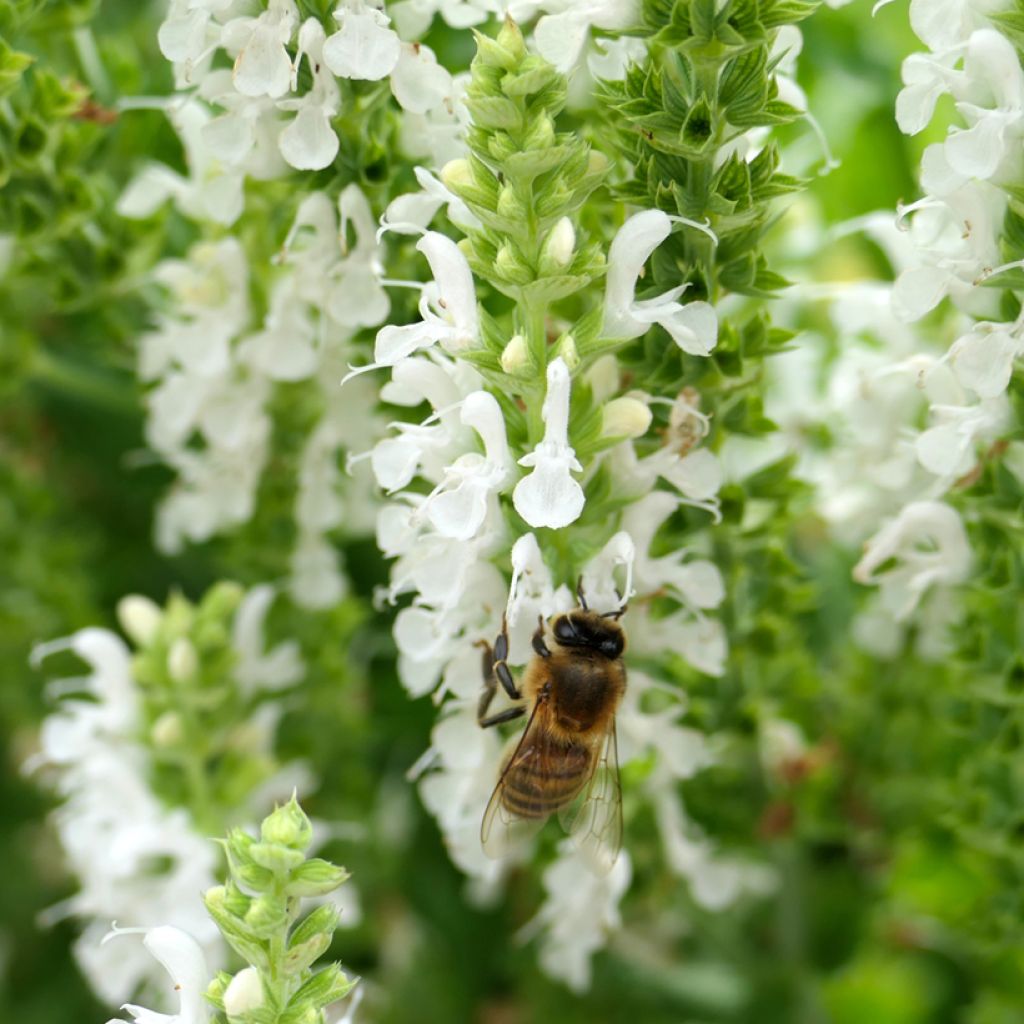

Salvia nemorosa Salute White - Sauge des bois
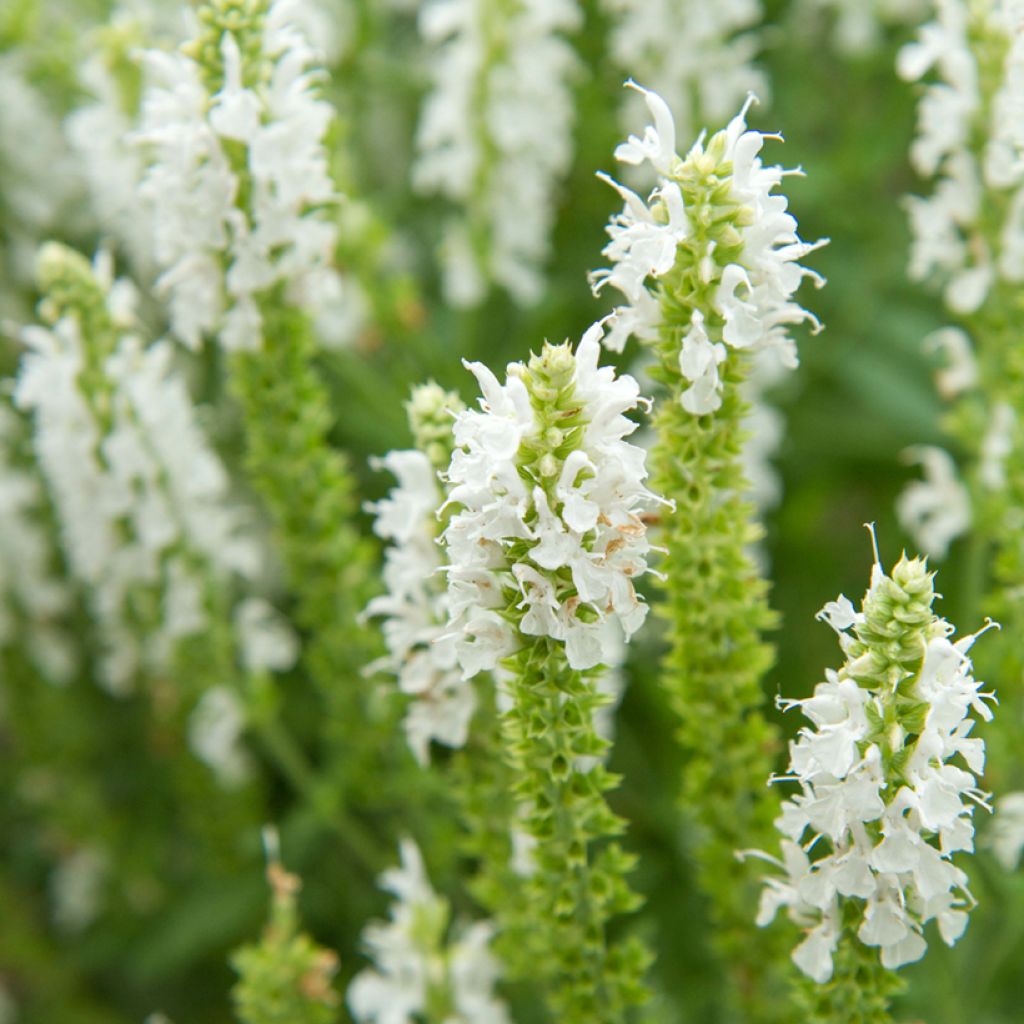

Salvia nemorosa Salute White - Sauge des bois
Salvia nemorosa Salute White - Woodland Sage
Salvia nemorosa Salute White
Woodland Sage, Balkan Clary
Why not try an alternative variety in stock?
View all →This plant carries a 12 months recovery warranty
More information
We guarantee the quality of our plants for a full growing cycle, and will replace at our expense any plant that fails to recover under normal climatic and planting conditions.
From €5.90 for pickup delivery and €6.90 for home delivery
Express home delivery from €8.90.
Delivery to Corse prohibited: UE law prohibits the import of this plant from mainland France to Corse as part of the fight against Xylella fastidiosa. Please accept our sincere apologies.
More information
Does this plant fit my garden?
Set up your Plantfit profile →
Description
The Salvia nemorosa 'Salute White' is a perennial variety of sage characterized by a compact habit and a generous and vibrant pure white flowering. This medium-sized and well-groomed selection will delight enthusiasts of robust and countryside flowers that promote biodiversity. It produces a multitude of small white flowers, clustered on long spikes, dominating a tuft of dark grey-green foliage, pleasantly aromatic. Hardy and bright, it is easy to combine in borders as well as in flowering pots.
The Salvia nemorosa 'Salute White' is a hardy perennial plant in the family Lamiaceae or Labiatae. Its wild ancestor, the wood sage, is a species native to central Europe and western Asia. The 'Salute White' cultivar is a branching clump, with an adult size not exceeding 50 cm in flower height and 50 cm (20in) in width. This perennial develops from a prostrate rosette composed of oval, rough, dark grey-green leaves with toothed edges, aromatic when crushed. It exhibits a bushy, heavily branched and sturdy habit in summer. The flowering begins in May-June and continues until August-September, but providing the soil does not dry out too much and the faded flowers are regularly pruned. It takes the form of terminal clusters carrying numerous small white flowers (0.5 to 1 cm (0in)) with green bracts. The beautiful nectar-rich flower spikes are a delight for bees and butterflies. The vegetation of this sage persists more or less in winter. Its very cold-resistant stump does not fear harsh winters if the soil is properly drained.
Plant 'Salute White' sage along the edge of a border in combination with carnations, coreopsis or catmints, for example. It is an excellent candidate for ornamenting terraces and balconies, but also a privileged host for low-maintenance borders. Easy to grow, this variety is one of the hardiest salvias, and as such, a fantastic garden perennial that does not disappoint. It withstands everything, even wind, cold, heat, and poor soils. This variety is particularly suitable for a white garden, for example along a pathway, but it blends very easily with all types of flowerings. It is superb when accompanied by pink-flowered plants like the 'The Fairy' rose, a red rose for a strong contrast (Rouge Cascade), or with hardy geraniums. It also pairs well with shrubby Lavateras, Penstemons, Paeonies.
With over 900 species of annuals, perennials, and soft-wooded shrubs distributed all over the world, except in very cold regions and tropical forests, the genus Salvia is the richest in the family Lamiaceae. The name Salvia, dating back to Roman times, derives from the Latin word salvus meaning 'healthy' in reference to the medicinal properties of common sage.
Report an error about the product description
Salvia nemorosa Salute White - Woodland Sage in pictures
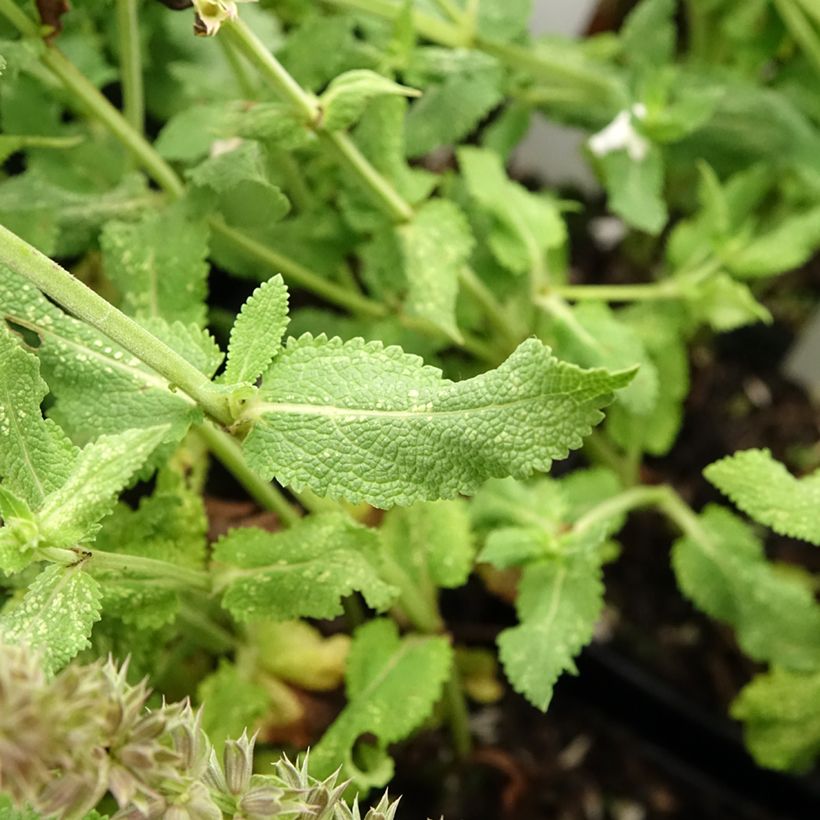

Flowering
Foliage
Plant habit
Botanical data
Salvia
nemorosa
Salute White
Lamiaceae
Woodland Sage, Balkan Clary
Cultivar or hybrid
Other Salvia - Sage
Planting and care
Install the Salvia nemorosa 'Salute White' in an ordinary, even poor and rather calcareous, but above all well-draining soil. This plant tolerates some drought, but to the detriment of flowering. It does not appreciate heavy, waterlogged soils in winter, which can harm its hardiness. This plant prefers a sunny exposure. It is an easy, very floriferous plant. In spring, provide fertilizer and in April, prune all the branches by half. After flowering, cut the faded flower stalks to stimulate and prolong flowering. To preserve the vitality of the sage, it is good to divide the plant after 3 years. Plant the new plants in well-worked soil: to improve slightly poor soil, mix in some horticultural compost. In more humid conditions, use a mineral mulch (gravel, pumice, pebbles) with a thickness of 4 to 6 cm (2in) to drain the neck of the plant.
Planting period
Intended location
Care
This item has not been reviewed yet - be the first to leave a review about it.
Summer flowering perennials
Haven't found what you were looking for?
Hardiness is the lowest winter temperature a plant can endure without suffering serious damage or even dying. However, hardiness is affected by location (a sheltered area, such as a patio), protection (winter cover) and soil type (hardiness is improved by well-drained soil).

Photo Sharing Terms & Conditions
In order to encourage gardeners to interact and share their experiences, Promesse de fleurs offers various media enabling content to be uploaded onto its Site - in particular via the ‘Photo sharing’ module.
The User agrees to refrain from:
- Posting any content that is illegal, prejudicial, insulting, racist, inciteful to hatred, revisionist, contrary to public decency, that infringes on privacy or on the privacy rights of third parties, in particular the publicity rights of persons and goods, intellectual property rights, or the right to privacy.
- Submitting content on behalf of a third party;
- Impersonate the identity of a third party and/or publish any personal information about a third party;
In general, the User undertakes to refrain from any unethical behaviour.
All Content (in particular text, comments, files, images, photos, videos, creative works, etc.), which may be subject to property or intellectual property rights, image or other private rights, shall remain the property of the User, subject to the limited rights granted by the terms of the licence granted by Promesse de fleurs as stated below. Users are at liberty to publish or not to publish such Content on the Site, notably via the ‘Photo Sharing’ facility, and accept that this Content shall be made public and freely accessible, notably on the Internet.
Users further acknowledge, undertake to have ,and guarantee that they hold all necessary rights and permissions to publish such material on the Site, in particular with regard to the legislation in force pertaining to any privacy, property, intellectual property, image, or contractual rights, or rights of any other nature. By publishing such Content on the Site, Users acknowledge accepting full liability as publishers of the Content within the meaning of the law, and grant Promesse de fleurs, free of charge, an inclusive, worldwide licence for the said Content for the entire duration of its publication, including all reproduction, representation, up/downloading, displaying, performing, transmission, and storage rights.
Users also grant permission for their name to be linked to the Content and accept that this link may not always be made available.
By engaging in posting material, Users consent to their Content becoming automatically accessible on the Internet, in particular on other sites and/or blogs and/or web pages of the Promesse de fleurs site, including in particular social pages and the Promesse de fleurs catalogue.
Users may secure the removal of entrusted content free of charge by issuing a simple request via our contact form.
The flowering period indicated on our website applies to countries and regions located in USDA zone 8 (France, the United Kingdom, Ireland, the Netherlands, etc.)
It will vary according to where you live:
- In zones 9 to 10 (Italy, Spain, Greece, etc.), flowering will occur about 2 to 4 weeks earlier.
- In zones 6 to 7 (Germany, Poland, Slovenia, and lower mountainous regions), flowering will be delayed by 2 to 3 weeks.
- In zone 5 (Central Europe, Scandinavia), blooming will be delayed by 3 to 5 weeks.
In temperate climates, pruning of spring-flowering shrubs (forsythia, spireas, etc.) should be done just after flowering.
Pruning of summer-flowering shrubs (Indian Lilac, Perovskia, etc.) can be done in winter or spring.
In cold regions as well as with frost-sensitive plants, avoid pruning too early when severe frosts may still occur.
The planting period indicated on our website applies to countries and regions located in USDA zone 8 (France, United Kingdom, Ireland, Netherlands).
It will vary according to where you live:
- In Mediterranean zones (Marseille, Madrid, Milan, etc.), autumn and winter are the best planting periods.
- In continental zones (Strasbourg, Munich, Vienna, etc.), delay planting by 2 to 3 weeks in spring and bring it forward by 2 to 4 weeks in autumn.
- In mountainous regions (the Alps, Pyrenees, Carpathians, etc.), it is best to plant in late spring (May-June) or late summer (August-September).
The harvesting period indicated on our website applies to countries and regions in USDA zone 8 (France, England, Ireland, the Netherlands).
In colder areas (Scandinavia, Poland, Austria...) fruit and vegetable harvests are likely to be delayed by 3-4 weeks.
In warmer areas (Italy, Spain, Greece, etc.), harvesting will probably take place earlier, depending on weather conditions.
The sowing periods indicated on our website apply to countries and regions within USDA Zone 8 (France, UK, Ireland, Netherlands).
In colder areas (Scandinavia, Poland, Austria...), delay any outdoor sowing by 3-4 weeks, or sow under glass.
In warmer climes (Italy, Spain, Greece, etc.), bring outdoor sowing forward by a few weeks.

































